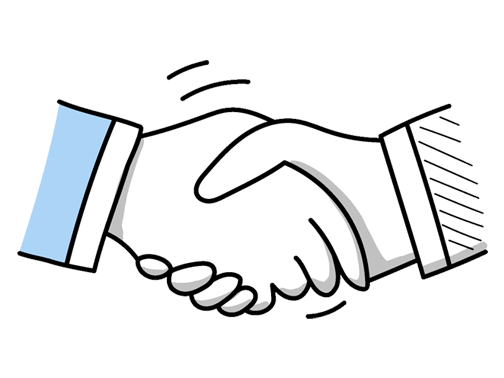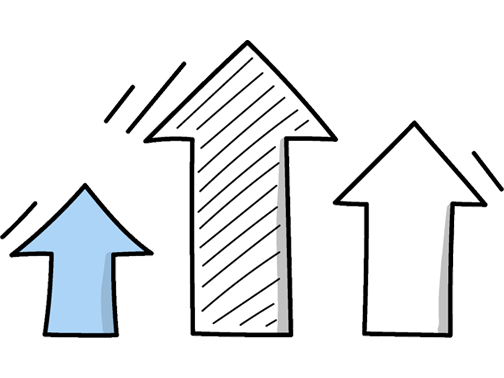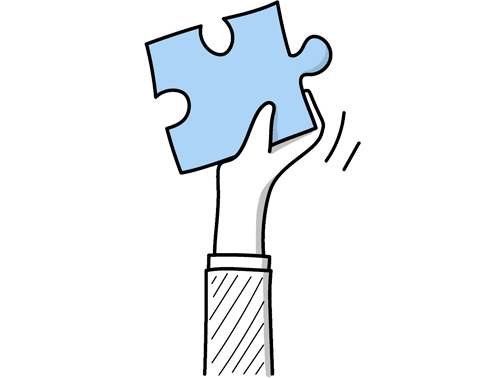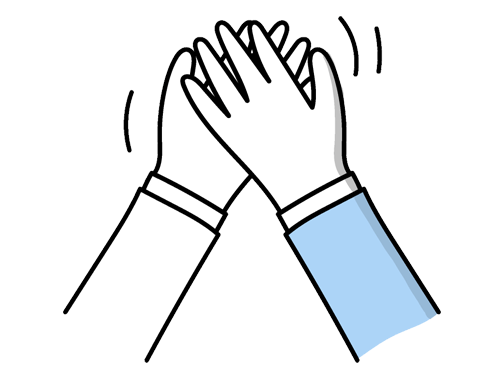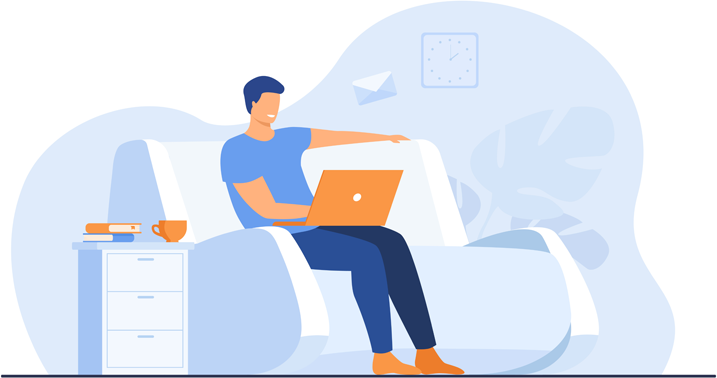Digital Designer Interview Questions (2025 Guide)
Find out common Digital Designer questions, how to answer, and tips for your next job interview
Practice Interviews Online - Identify your strengths and weakness in a realistic Digital Designer mock interview, under 10 minutes
Practice Now »Digital Designer Interview Questions
This interview question aims to understand how your technical skills enhance your design capabilities and collaboration with developers. You should clearly state the coding languages you know that support your design process, like HTML, CSS, or JavaScript, and explain how they help you create more effective designs.
Example: I’m comfortable with HTML and CSS, as they help me bring designs to life on the web, ensuring everything looks and functions as intended. Knowing some JavaScript also allows me to understand interactive elements better, which improves collaboration with developers. For example, when working on a recent project, these skills helped me quickly prototype responsive layouts and refine user experience details.
This question is asked to understand how you prioritize and showcase your best work to reflect your skills and impact. You should say that you select projects that demonstrate a diverse skill set and highlight those that achieved measurable improvements in user experience or engagement.
Example: When choosing projects for my portfolio, I focus on work that not only showcases strong design skills but also delivered clear results, like improving user engagement or driving conversions. I include pieces that reflect how I’ve grown, whether that’s mastering new tools or tackling different challenges. For example, a recent redesign led to a 20% increase in user retention, which really highlights both creativity and impact.
Questions like this assess your problem-solving skills and how you integrate data into your design process. You need to clearly describe the design challenge, explain how you used data to address it, and highlight the positive impact your solution had on the user experience.
Example: In a recent project, I noticed users struggling with navigation on a website. By reviewing heatmaps and user session recordings, I identified confusing menu labels and drop-off points. Using this data, I simplified the menu structure and improved labeling, which led to a 20% increase in user engagement. It taught me the importance of letting real user behavior guide design decisions rather than assumptions.
Employers ask this to see if you are proactive about learning and adapting in a fast-changing field. You need to say that you regularly engage with online courses or webinars, keep track of new tools, and apply them successfully in your projects.
Example: I make it a habit to regularly follow design blogs and communities, such as Smashing Magazine and Dribbble, to see what tools are trending. I also experiment with new software through small personal projects, which helps me understand their practical benefits. Recently, I explored Figma’s latest prototyping features by redesigning a user flow, which really improved my workflow and design collaboration skills.
Employers ask this question to understand how you collaborate and contribute within a team, ensuring you can work well with others and support shared goals. You should describe your usual role, such as leading design efforts, explain how you help teammates by offering feedback or guidance, and highlight your communication approach, like fostering open discussions during reviews.
Example: In a team, I usually take on the role of a collaborative creator, focusing on bringing clear, user-friendly designs to life. I support my teammates by being approachable and open to feedback, ensuring everyone’s ideas are heard. For example, during a recent project, I facilitated regular check-ins to keep communication smooth and helped bridge gaps between design and development, so we stayed aligned and met our deadlines effectively.
What they want to understand with this question is how you approach design challenges and measure success. You need to clearly explain the project's goals, your role, how you solved problems using user feedback, and the positive impact your design had.
Example: One project I’m proud of is redesigning a local charity’s website to improve accessibility and user engagement. I led the visual design, focusing on clear navigation and inclusive colour choices. Through user testing, we identified pain points and iterated quickly. The result was a 30% increase in donations and positive feedback from users, which showed the design truly made a difference beyond just aesthetics.
Interviewers ask this to see how you balance user experience with business objectives. You need to explain that you use user research, feedback, and data analysis to guide your design decisions while aligning with project goals and stakeholder requirements.
Example: I start by really understanding who the users are and what the business aims to achieve. This means gathering insights through user research and talking with stakeholders early on. Then, I create prototypes and test them to see how well they work in practice. For example, in a recent project, we adjusted the design after user feedback, which improved engagement significantly while aligning with the company’s objectives.
This question helps the interviewer understand how you handle difficulties and solve problems in your work. You need to briefly describe the toughest project, explain the specific challenges you faced, and clearly outline the steps you took to successfully overcome them.
Example: One of the toughest projects was redesigning a client’s website with a tight deadline and unclear brand guidelines. To tackle this, I prioritized clear communication, broke down tasks into manageable phases, and stayed flexible to feedback. By collaborating closely with the client and my team, we delivered a design that not only looked fresh but also improved user engagement significantly.
What they want to understand is how you keep everyone informed and aligned to avoid conflicts or delays. You should say you communicate regularly with updates, collaborate through feedback sessions, and manage changes by documenting versions to ensure clarity throughout the project.
Example: Throughout a project, I keep everyone in the loop by sharing regular updates and inviting feedback early and often. I find that involving both the team and stakeholders in discussions helps prevent misunderstandings and keeps us aligned. When changes come up, I address them directly and ensure everyone understands the reasons behind decisions. For example, in my last role, this approach helped us smoothly adapt designs without losing momentum.
Interviewers ask this to understand how well you adapt designs across devices and ensure a consistent user experience. You should explain your approach using flexible grids, CSS media queries, and responsive images, describe how you tackle challenges like layout fixes or performance, and mention tools like Bootstrap or CSS Grid/Flexbox that you use.
Example: In my work, I focus on creating designs that adapt smoothly across devices by starting with flexible layouts and prioritising content hierarchy. When challenges arise, like buttons not scaling well on smaller screens, I use tools like Figma and CSS media queries to test and refine interactions. This way, users get an intuitive experience whether they’re on a phone, tablet, or desktop, ensuring the design feels natural everywhere.
Hiring managers ask this question to see if you can receive constructive criticism professionally and use it to improve your work. You need to say you listen carefully, consider the feedback objectively, and communicate respectfully to find the best solution.
Example: When I receive feedback I don’t initially agree with, I try to understand the reasoning behind it by asking questions and seeing things from their perspective. For example, once a client wanted a design that didn’t align with our brand guidelines, so I listened carefully, explained my concerns, and together we found a solution that satisfied both their vision and our standards. It’s about collaboration and staying open-minded.
This interview question aims to assess your adaptability and problem-solving skills when facing unexpected challenges. You need to explain a specific situation where you changed your design strategy, why you did it, and the positive outcome that resulted.
Example: During a website redesign, user feedback revealed navigation issues halfway through the project. We shifted from a purely aesthetic focus to prioritising usability, simplifying menus and improving accessibility. This pivot not only enhanced user engagement but also met business goals more effectively. It taught me the importance of flexibility and listening to real-time feedback in design.
This question aims to see how your work delivers real value and connects with business goals or user needs. You need to clearly describe the problem your design solved and provide specific results or improvements that happened because of your work.
Example: Sure. In a recent project, I redesigned a client’s e-commerce site to simplify navigation and highlight key products. This led to a noticeable increase in user time on site and a 20% boost in sales within two months. Seeing how thoughtful design directly contributes to business growth is always rewarding, and it motivates me to keep focusing on user experience that drives real results.
Employers ask this question to see how you communicate your design thinking and showcase your skills through real work. You should clearly describe the project’s purpose, your approach and tools, and the positive results or feedback it achieved.
Example: One project that stands out is a website redesign for a local charity. The goal was to create a more user-friendly experience that encouraged donations. I focused on clear navigation and impactful visuals, using vibrant colours to evoke warmth and trust. After launch, their donations increased by 30%, which showed how design can really connect with people and drive results. It really reflects my approach to thoughtful, purpose-driven design.
Employers ask this to see how you manage pressure and still deliver quality work. You need to explain how you prioritize key design elements, adapt creatively to constraints, and communicate clearly with your team to set realistic expectations.
Example: When facing tight deadlines or limited resources, I focus on what will have the biggest impact first, staying flexible to adapt as things change. I keep communication open with the team and clients to manage expectations and gather input early. For example, on a recent project, we streamlined designs to key features, which saved time without compromising quality, ensuring delivery on schedule.
What they want to know is how you prioritize both innovative ideas and practical usability to create effective designs. You should explain how you focus on user needs and design goals, iterate based on feedback, and collaborate with developers to balance creativity with functionality.
Example: I focus on understanding what users really need and the goals the project aims to achieve. By keeping usability at the forefront, I find ways to bring fresh ideas without compromising practicality. I also keep an open dialogue with teams and stakeholders to ensure the design not only looks good but works smoothly. For example, on a recent app, creative visuals were balanced with intuitive navigation, making it both appealing and easy to use.
Interviewers ask this to understand how you handle obstacles and maintain creativity under pressure. You need to explain how you identify the source of your creative blocks, use collaborative or individual techniques to generate fresh ideas, and show your persistence by refining your work until you overcome the challenge.
Example: When I hit a creative roadblock, I start by stepping back to pinpoint what’s causing the stall—whether it’s a lack of inspiration or unclear goals. I then try shifting my perspective, maybe sketching freely or exploring different design styles. Staying flexible and patient is key; once, taking a short break led me to a fresh idea that completely changed the direction for the better.
Interviewers ask this to see if you can bridge the gap between design and business, ensuring your ideas are understood by all team members. You need to say that you explain concepts using simple language, use clear visual aids like sketches or prototypes, and actively invite feedback to foster collaboration.
Example: When sharing design ideas with non-design stakeholders, I focus on breaking down concepts into everyday language, avoiding jargon. Visuals like sketches or prototypes help bring ideas to life, making them easier to grasp. I also make it a point to ask for their thoughts throughout the process, fostering a two-way conversation. For example, in a past project, this approach helped align the team quickly and shape a more user-friendly outcome.
Interviewers ask this to see how you handle multiple deadlines and stay organized under pressure. You need to explain that you assess task urgency and importance, create a clear schedule, and adjust as needed to ensure timely, quality results.
Example: When starting a project, I break down tasks by deadlines and impact, focusing first on what moves the design forward most effectively. I use tools like Trello to keep track and stay flexible if priorities shift. For example, during a recent campaign, adjusting mid-way helped me meet client needs without compromising quality or timing. Staying organised but adaptable keeps everything on track and the creative flow steady.
This interview question assesses your ability to create designs that work seamlessly across various devices and platforms, ensuring usability and performance. You should explain how you apply responsive design principles like flexible grids and media queries, test your designs using device emulators and real devices, and optimize performance with techniques such as using optimized images and scalable vector graphics.
Example: I focus on creating flexible layouts that adapt smoothly to different screen sizes, making sure the user experience stays consistent whether on mobile or desktop. I regularly test designs on various devices and browsers to catch any quirks early. Plus, I pay attention to things like image sizes and load times to keep performance sharp, ensuring designs not only look good but run efficiently across platforms.
This interview question helps the employer understand how you engage with collaboration and continuous improvement in your design work. You need to say that you proactively gather feedback through user testing and stakeholder input, then analyze and prioritize this feedback to make iterative improvements in your designs.
Example: I usually start by checking in with the team and users early on to get their thoughts. When I receive feedback, I look closely at what’s most relevant to the project goals and user needs, then carefully adjust my designs. For example, in a recent project, iterative feedback helped me simplify the navigation, which made the interface much clearer and more user-friendly by the final version.
This question helps interviewers understand how you tackle complex design challenges and apply problem-solving skills in your work. You need to clearly describe the design problem, explain the steps you took—including any research or user feedback—and briefly share the positive outcome and what you learned from the experience.
Example: In a past project, we needed to redesign a complex dashboard that confused users. I started by gathering user feedback to pinpoint pain points, then collaborated with developers to simplify navigation while keeping key data accessible. The new design reduced user errors by 30% and received positive feedback for clarity. It reinforced how essential understanding user needs is before jumping into solutions.
This question helps interviewers gauge your ability to manage a project from start to finish and how well you align your work with client needs. You should explain how you gather requirements through stakeholder interviews, develop ideas using wireframes and prototypes, and finalize designs by ensuring consistency and usability before delivery.
Example: Sure! I usually start by chatting with the client to get a clear idea of what they want and what the project aims to achieve. Then, I sketch out some initial ideas and gather feedback to refine the design. Once the direction feels right, I polish the visuals, ensure everything works well, and prepare the final files. For example, on a recent website project, this approach helped us deliver a clean, user-friendly design that matched the brand perfectly.
Hiring managers ask this to assess your practical skills and familiarity with essential design software. You need to clearly state which tools you excel in and briefly explain how you’ve used them to achieve successful project outcomes.
Example: I primarily work with Adobe Creative Suite—Photoshop, Illustrator, and XD—which I’ve used to create engaging web and mobile designs. In my last project, I combined Illustrator and XD to develop a seamless user interface that improved client engagement. I’m also quick to learn new tools; recently, I picked up Figma to collaborate more efficiently with remote teams and found it really streamlines the design process.
Hiring managers ask this to see how well you work with others and contribute to a team effort, which is crucial in digital design projects. In your answer, briefly describe the project, your role, how you communicated and coordinated with teammates, and the positive outcome you helped achieve.
Example: In a recent project, I worked closely with developers and content creators to redesign a client’s website. We held regular check-ins to align on goals and quickly address challenges. By sharing feedback openly and adapting designs based on technical constraints, we delivered a user-friendly site on time. It was a great example of how clear communication and teamwork make complex projects run smoothly.
Ace your next Digital Designer interview with even more questions and answers
Common Interview Questions To Expect
The interviewer is looking for you to highlight your key skills, abilities, and qualities that make you a strong candidate for the position. Be specific and provide examples if possible.
Example: My biggest strengths as a digital designer are my creativity, attention to detail, and ability to think outside the box. For example, I recently designed a website that increased user engagement by 30% due to my innovative design choices. I believe these strengths make me a valuable asset to any design team.
The interviewer is looking for your long-term career goals, ambition, and commitment to the company. Answers should demonstrate a clear vision and alignment with the company's values.
Example: In five years, I see myself continuing to grow and develop as a digital designer, taking on more challenging projects and expanding my skill set. I hope to be a valuable asset to the company, contributing innovative ideas and helping to drive success in the digital design department. Ultimately, I see myself in a leadership role, mentoring and inspiring others in the field.
The interviewer is looking for evidence that you have done your research on the company, understand their values, products/services, and overall mission. You can answer by discussing their history, recent news, or any personal experiences with their brand.
Example: I know that your company is a leading digital marketing agency in the UK, specializing in creating innovative and visually appealing designs for clients. I've seen some of the amazing campaigns you've worked on, like the recent one for XYZ brand. I'm excited about the opportunity to contribute my design skills to such a dynamic and creative team.
The interviewer is looking for your commitment to ongoing learning and growth in your field. You can answer by discussing courses, certifications, conferences, or other ways you plan to stay current in digital design.
Example: I'm always looking to stay up-to-date in the ever-evolving world of digital design. I plan on taking online courses and attending design conferences to expand my skills and knowledge. Continuous learning is key to staying competitive in this field.
The interviewer is looking for insight into your personal drive and passion for your work. You can answer by discussing your passion for creativity, problem-solving, learning new skills, or achieving goals.
Example: What motivates me is my passion for creativity and problem-solving. I love the challenge of coming up with innovative designs and finding solutions to complex problems. Setting and achieving goals in my work keeps me driven and excited to continue growing as a digital designer.
Company Research Tips
The company's website is a goldmine of information. Look for details about the company's history, mission, vision, and values. Pay special attention to the 'About Us', 'Our Team', and 'News' or 'Blog' sections. These can provide insights into the company culture, recent achievements, and future plans. For a Digital Designer role, also check their portfolio or case studies to understand the kind of design work they do.
Tip: Look for any design-related language or jargon used on the website. This can give you an idea of the company's design philosophy.
Social media platforms like LinkedIn, Twitter, Facebook, and Instagram can provide a wealth of information about the company. You can learn about the company's culture, employee experiences, and recent updates. For a Digital Designer role, their social media presence can also give you an idea of their design aesthetics and how they present themselves online.
Tip: Follow the company's social media accounts to stay updated with their latest news and activities. Also, check the comments and reviews for additional insights.
Understanding the company's competitors can give you a broader perspective of the industry and the company's position within it. Look for information about the competitors' products, services, and strategies. For a Digital Designer role, also compare the design aesthetics and user experience of the competitors' digital platforms.
Tip: Use tools like SimilarWeb or Alexa to get insights into the competitors' website traffic and user engagement.
Websites like Glassdoor and Indeed provide reviews from current and former employees. These can give you insights into the company culture, work environment, management style, and more. For a Digital Designer role, look for reviews from other designers or related roles to get a sense of the work expectations and challenges.
Tip: Take the reviews with a grain of salt as they can be biased. Look for common themes across multiple reviews.
What to wear to an Digital Designer interview
- Smart casual attire
- Clean, well-fitted jeans
- Business casual blazer
- Neutral or dark colours
- Comfortable, polished shoes
- Minimal accessories
- Well-groomed appearance
- Avoid flashy prints
- Carry a professional bag
- Bring a portfolio of work
